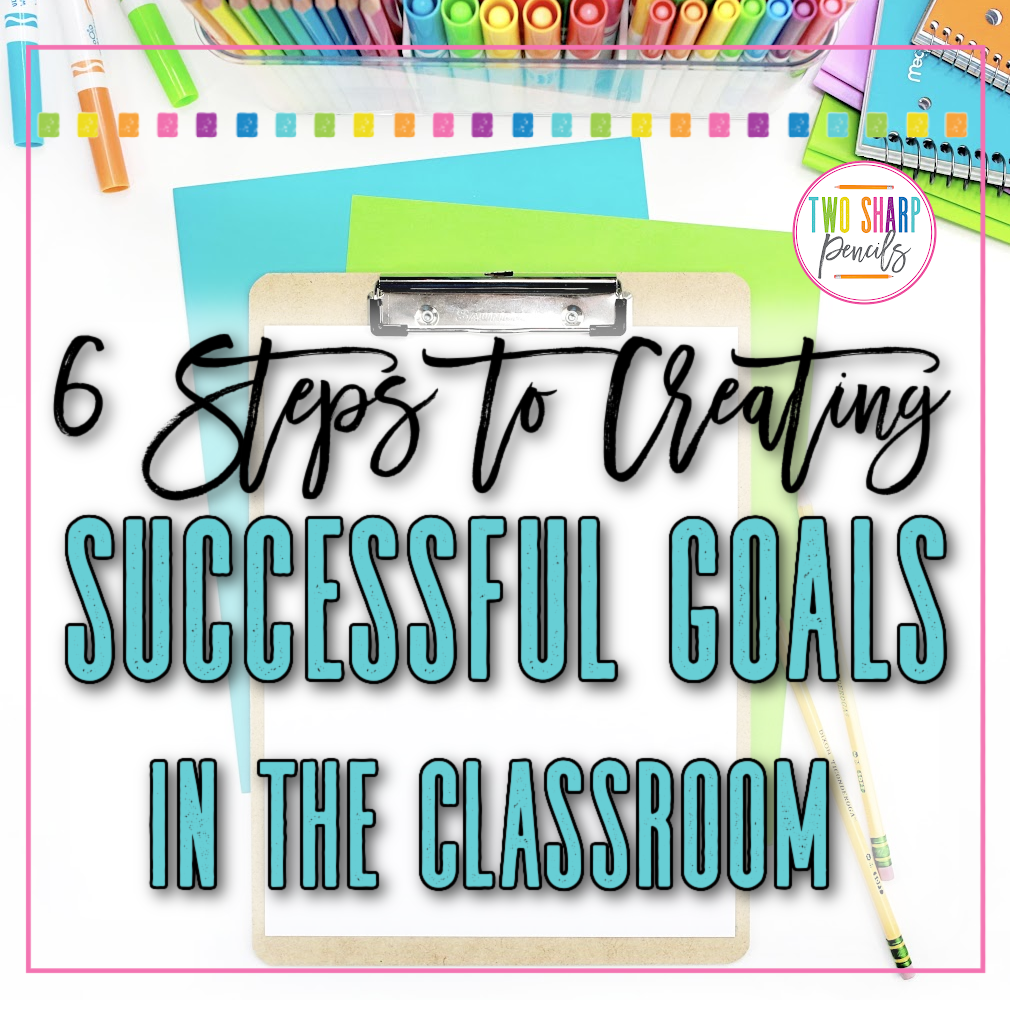6 Steps to Successful Goal Setting for Students
Looking for how to incorporate goal setting for students in your classroom? As much as some of us despise New Year’s resolutions, you have to admit that there is something about a brand new year that does ignite the desire to set goals.
This feeling is something that you can tap into in the classroom, especially if you are having difficulty with negative behaviors or unmotivated students.
Get your class excited to start the new year right with these 6 steps to goal setting for students. Also, make sure to grab the FREEBIE below with a list of student goal examples!

Choose Meaningful Goals
When students are thinking of something that they would like to improve, they need to choose a goal that they will be motivated to work at. They will feel empowered if they make the decision themselves, versus just choosing something you as the teacher tell them they need to work on.
Write Down the Goal Using Affirmative Language
There is something about actually writing or typing out a statement that is powerful. Instead of just thinking to yourself, “I’m going to try and do better at something”, when you write it down, you are putting it out there to be read and remembered.
Make sure that goals are written with positive, affirmative language. There might be something that a student wants to stop doing, but instead of stating it in a negative manner, they should think of the positive behavior they want to replace it with. For example, instead of “I will stop talking so much”, they might write, “I will work on my independent work quietly.”
Keep Goals Clear and Concise
Just think “short and sweet”. It is important that the goal that is chosen is easy to understand and doesn’t take on too much. If you find that the goal is getting too wordy, it might be a good idea to see if it can be split into smaller actions. For example, “I will pay attention when the teacher is talking and do my best work,” could be split into two smaller goals.
You also want to make sure that the statement is not a vague one, such as, “I will work hard.” Have students dig deeper and think about what working hard looks like, and choose a specific behavior, such as, “I will complete my classwork on time.”
Make Sure the Goal is Measurable
One reason that you want to make a goal as specific as possible, is so that it can be measured. Looking again at the example of a goal that is too general, “I will work hard,” is really difficult to measure. When you have specific behaviors you can actually track how many times you complete the action in a certain amount of time. For example, “I will complete my morning work each day,” can be easily tracked.
Create an Action Plan
If your students have chosen and written down a goal that is meaningful, clear and concise, and measurable, they are halfway there. But in order to truly be successful, they need to create an action plan to go along with the goal. You can set a certain amount of time for them to work on their goal, such as a month.
Students should think about a reasonable amount of times per week they want to reach their goal. They should also brainstorm actions that will lead to success. For example, “In order to get my morning work done, I need to have my supplies ready, get in my seat right away in the morning, etc.”
Take Time to Reflect
Your class should revisit the goal daily and track their progress. At the end of the time period, students can reflect on how they did with their goal. At this point they can decide to continue to work on the same goal or choose a new one!
So to review the steps for successful goal setting for students:
- Make Goals Meaningful
- Write Goals Down Use Affirmative Language
- Keep Goals Clear and Concise
- Make a Goal that is Measurable
- Create an Action Plan
- Take Time to Reflect
If this sounds like something you would like to try with your class, check out our Goal Setting: Data Collection and Self-Reflection. You can find the digital and printable bundle below. It has everything you need to practice setting goals with your students!



You can also grab this FREE Choose a Goal Checklist from the resource, with examples of goals for your students.

Setting intentional goals is such an important skill for students to learn. We hope that you are able to use this information to have successful goal setting for students in your classroom.
Happy New Year!
Check out our related posts below!



